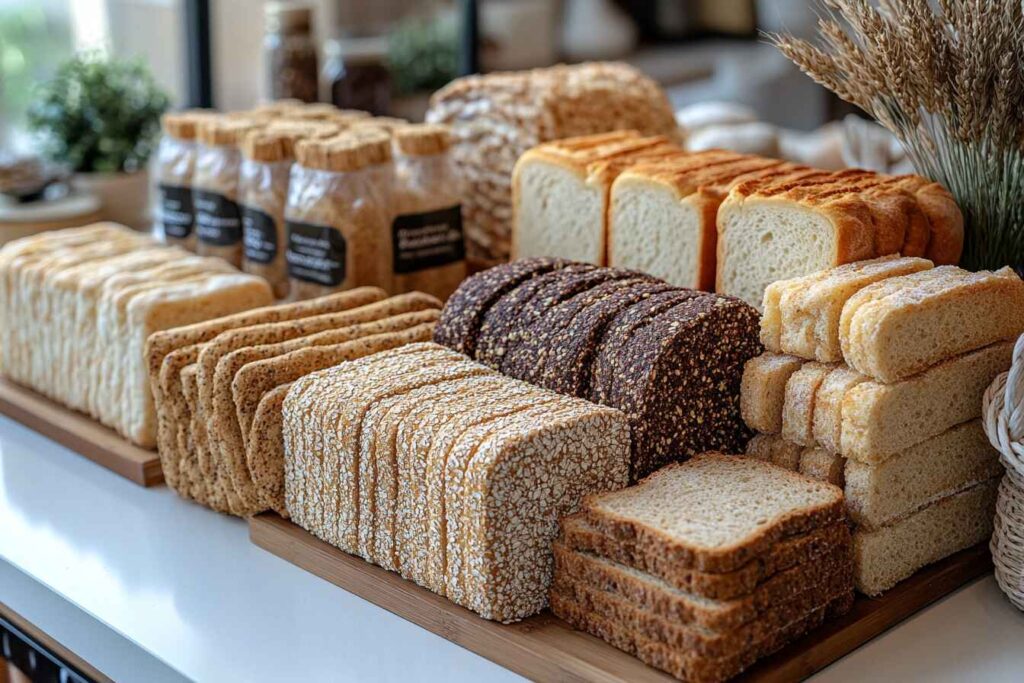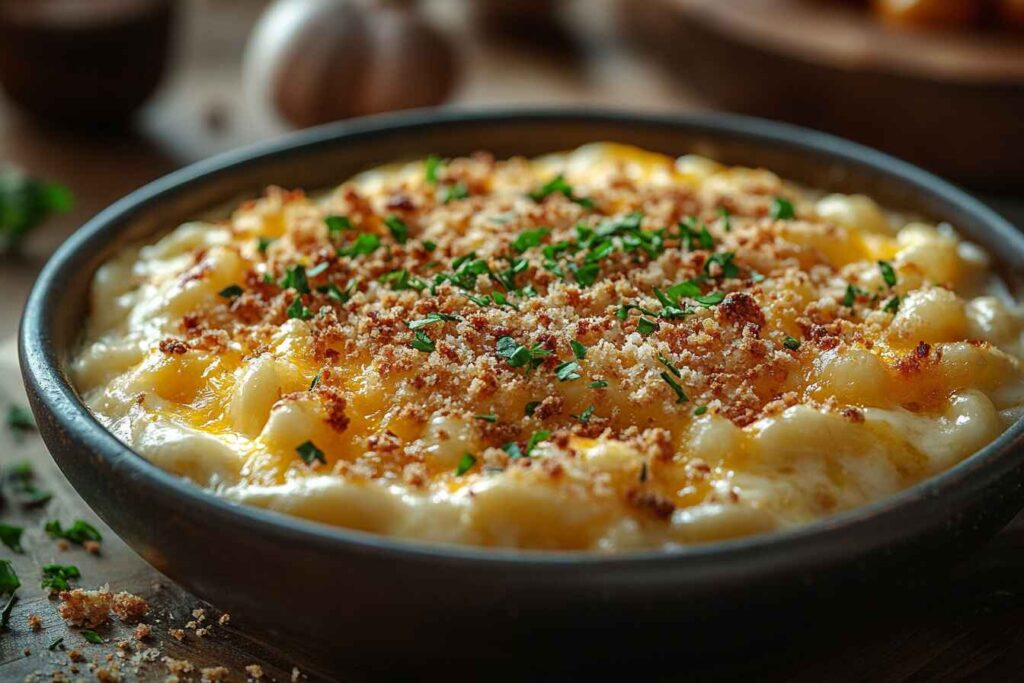If you’ve ever stood in the grocery aisle, staring at bread crumb packages, wondering, “Which bread crumbs are gluten-free?”—you’re not alone. Finding the right alternative can be tricky, but don’t worry! This guide will break it all down for you, from store-bought brands to homemade recipes and creative uses.
Understanding Gluten-Free Bread Crumbs
What Are Bread Crumbs?
Bread crumbs are those tiny bits of dried bread that add crunch and texture to a variety of dishes. From crispy coatings on fried foods to thickening agents in meatballs, they play a huge role in cooking. But here’s the problem—traditional bread crumbs are made from wheat-based bread, which contains gluten.
Why Do Bread Crumbs Contain Gluten?
Most commercial bread crumbs are made from white, wheat, or whole grain bread, all of which contain gluten. Gluten is the protein that gives bread its chewy texture. It’s great for baking, but if you have celiac disease or a gluten sensitivity, it’s a big no-no.
Who Needs Gluten-Free Bread Crumbs?
Not everyone needs to avoid gluten, but for those who do, it’s essential. Here’s who should go gluten-free:
- Celiac disease sufferers: Gluten triggers an autoimmune reaction that damages the small intestine.
- People with gluten sensitivity: They may experience bloating, fatigue, or digestive issues.
- Anyone on a gluten-free diet: Whether for health reasons or personal choice, avoiding gluten is becoming more common.
Types of Gluten-Free Bread Crumbs
Luckily, there are plenty of gluten-free alternatives to traditional bread crumbs. Let’s go through the options.
Store-Bought Gluten-Free Bread Crumbs
If you prefer convenience, store-bought gluten-free bread crumbs are the way to go. Many brands now offer wheat-free options made from gluten-free bread or alternative ingredients like rice flour or corn.
Tip: Always check the ingredient list for hidden gluten sources like malt extract or barley flour.
Homemade Gluten-Free Bread Crumbs
Want full control over your ingredients? Make your own! It’s easy, and you can customize the texture and flavor. Simply dry out gluten-free bread, grind it into crumbs, and you’re good to go.
Alternative Options: Cornmeal, Crushed Nuts, and More
If you don’t have gluten-free bread crumbs on hand, don’t panic. There are some creative substitutes:
- Cornmeal: Great for a crunchy coating on fried foods.
- Crushed nuts: Almonds, pecans, or walnuts add a rich, nutty flavor.
- Ground oats: Use certified gluten-free oats for a softer texture.
- Puffed rice cereal: Crush it for a crispy breadcrumb alternative.
Best Gluten-Free Bread Crumb Brands
With so many options on the market, which brands should you trust? Here are some top-rated gluten-free bread crumb brands.
| Brand | Ingredients | Texture |
|---|---|---|
| Aleia’s | Rice flour, tapioca flour, egg whites | Light and crispy |
| Schar | Corn starch, rice flour | Fine texture |
| Panko by Kikkoman | Rice flour, pea fiber | Extra crunchy |
Where to Buy Gluten-Free Bread Crumbs?
You can find these brands at major supermarkets like Whole Foods, Walmart, and Target. Online stores like Amazon and Thrive Market also carry a variety of gluten-free options.
How to Choose the Right Brand for Your Needs
Picking the best gluten-free bread crumbs depends on what you need:
- For frying: Go for panko-style crumbs for extra crunch.
- For meatballs or stuffing: Choose a finer breadcrumb for better absorption.
- For flavor: Check for seasoning like garlic or Italian herbs.
How to Make Gluten-Free Bread Crumbs at Home
Want to make your own gluten-free bread crumbs? It’s easier than you think! Here’s a simple recipe.
Ingredients You Need
| Ingredient | Quantity |
|---|---|
| Gluten-free bread | 4 slices |
| Olive oil (optional) | 1 tsp |
| Salt | ¼ tsp |
| Garlic powder (optional) | ¼ tsp |
Step-by-Step Recipe for Homemade Bread Crumbs
- Preheat your oven to 300°F (150°C).
- Lay the gluten-free bread slices on a baking sheet.
- Bake for 10-15 minutes, flipping halfway through, until dry and crisp.
- Let them cool completely.
- Break the bread into small pieces and grind in a food processor until you reach your desired texture.
- Optional: Add olive oil and seasonings for extra flavor.
Pro Tip: If you don’t have a food processor, put the dried bread in a ziplock bag and crush it with a rolling pin.
How to Store Homemade Gluten-Free Bread Crumbs
Store your homemade bread crumbs in an airtight container. Here’s how long they’ll last:
- Room temperature: 1-2 weeks
- Refrigerator: 1 month
- Freezer: Up to 6 months
Tip: If storing long-term, label your container with the date so you don’t forget when you made them.

Common Problems with Gluten-Free Bread Crumbs
Even though gluten-free bread crumbs are a fantastic alternative, they come with their own set of challenges. Let’s tackle some of the most common issues and how to fix them.
Texture Issues: How to Fix Crunchiness or Softness
One major complaint about gluten-free bread crumbs is that they don’t always have the same texture as traditional ones. Sometimes, they’re too soft, and other times, they’re too crunchy. So, how do you fix this?
- Too soft? Bake them a little longer to remove excess moisture.
- Too crunchy? Pulse them briefly in a food processor to break down the texture.
- Not sticking well? Try dipping food in egg wash before coating with crumbs.
Tip: For an ultra-crispy coating, mix gluten-free bread crumbs with crushed rice cereal or cornmeal.
Flavor Differences: How to Improve Taste
Gluten-free bread crumbs sometimes lack the depth of flavor found in regular ones. But don’t worry, there are ways to enhance them.
- Use seasoned crumbs: Some brands offer Italian or garlic-seasoned versions.
- Add your own spices: Mix in salt, pepper, paprika, garlic powder, or dried herbs.
- Toast before use: Lightly toasting bread crumbs in a dry pan brings out their flavor.
Finding Affordable Gluten-Free Bread Crumbs
Gluten-free products tend to be pricier than their regular counterparts. Here are some ways to save money:
- Buy in bulk: Many online retailers offer discounts on larger quantities.
- Make your own: Homemade bread crumbs are often cheaper and just as good.
- Use substitutes: Crushed gluten-free crackers or rice cakes work well and are often more affordable.
Creative Ways to Use Gluten-Free Bread Crumbs
Now that you have your gluten-free bread crumbs, how do you use them? Here are some delicious ways to incorporate them into your cooking.
Gluten-Free Bread Crumbs for Coating and Frying
One of the most popular uses for bread crumbs is coating foods before frying or baking. Whether you’re making crispy chicken, fish, or veggies, gluten-free bread crumbs work beautifully.
How to Get the Best Crispy Coating:
- Pat the food dry before breading.
- Dip it in flour first (use gluten-free flour).
- Next, dip in beaten eggs or buttermilk.
- Coat with gluten-free bread crumbs.
- Let it rest for 10 minutes before frying or baking.
Pro Tip: Use a double coating (dip in egg and crumbs twice) for an extra crispy texture.
Using Bread Crumbs in Meatballs and Meatloaf
Bread crumbs act as a binder in recipes like meatballs, meatloaf, and veggie patties. But do gluten-free ones work the same way? Absolutely!
How to Use in Meat Mixtures:
- Use ½ cup of gluten-free bread crumbs per pound of ground meat.
- Mix with an egg to help bind the ingredients.
- Let the mixture rest for 10 minutes before shaping.
Tip: If your mixture feels too dry, add a splash of milk or broth.
Topping Casseroles and Baked Dishes
Want a golden, crispy topping for your mac and cheese or casseroles? Gluten-free bread crumbs are perfect for that.
How to Make a Buttery Crunchy Topping:
- Mix ½ cup of gluten-free bread crumbs with 2 tablespoons of melted butter.
- Sprinkle over the dish before baking.
- Bake until golden brown.

Gluten-Free Bread Crumbs vs. Regular Bread Crumbs
How do gluten-free bread crumbs compare to traditional ones? Let’s break it down.
Nutritional Differences
| Nutrient | Regular Bread Crumbs (1/4 cup) | Gluten-Free Bread Crumbs (1/4 cup) |
|---|---|---|
| Calories | 110 | 90 |
| Carbohydrates | 22g | 19g |
| Protein | 4g | 3g |
| Fiber | 1g | 2g |
| Fat | 1g | 0.5g |
Did you know? Some gluten-free bread crumbs have more fiber because they use alternative flours like brown rice or chickpea flour.
Cooking and Baking Differences
Gluten-free bread crumbs absorb moisture differently than regular ones, which can affect recipes.
- More absorbent: You may need to use less in stuffing and meatball mixtures.
- Less elasticity: Gluten-free crumbs don’t hold together as well, so add an extra egg or binding agent.
- Different browning: They may not brown as quickly, so increase oven temperature slightly if needed.
Cost Comparison
Gluten-free bread crumbs are generally more expensive than regular ones. Here’s a rough price comparison:
| Type | Average Price per 12 oz |
|---|---|
| Regular Bread Crumbs | $2-$4 |
| Gluten-Free Bread Crumbs | $5-$8 |
Tips for Cooking with Gluten-Free Bread Crumbs
Want to get the best results when cooking with gluten-free bread crumbs? Follow these expert tips.
How to Get the Best Texture in Your Recipes
- For crispier results, toast the crumbs before using.
- Let coated foods rest for a few minutes before frying to help crumbs adhere.
- Use a little oil or butter when baking to get that golden brown finish.
Substituting Gluten-Free Bread Crumbs in Traditional Recipes
Most recipes work fine with a 1:1 substitution of regular and gluten-free bread crumbs. However, you may need slight adjustments:
- If too dry, add a splash of liquid.
- If not binding well, add an extra egg.
- If too soft, use a coarser breadcrumb variety.
Storing and Shelf Life Tips
To keep your bread crumbs fresh:
- Store in an airtight container.
- Keep in a cool, dry place.
- For long-term storage, freeze them in a ziplock bag.
Pro Tip: Label your container with the date so you know when to use them by!
Conclusion
By now, you should have a solid understanding of gluten-free bread crumbs—what they are, how they work, and how to use them in your cooking. Whether you’re buying store-bought options, making your own, or using creative alternatives, you now have all the tools to make delicious gluten-free meals.
Final Thoughts on Choosing the Right Gluten-Free Bread Crumbs
Choosing the right gluten-free bread crumbs comes down to three things: texture, flavor, and purpose. Need extra crunch? Go for panko-style crumbs. Making meatballs? A finer breadcrumb works better. If you want full control, making your own is a fantastic option.
Remember: Always check the labels when buying store-bought gluten-free crumbs to ensure they’re truly gluten-free and free from cross-contamination.
Additional Resources for a Gluten-Free Lifestyle
Going gluten-free isn’t just about swapping bread crumbs—it’s about finding delicious and safe alternatives in all areas of cooking. Here are some additional resources to help you on your journey:
- Gluten-Free Flour Guide: Learn about the best flour alternatives for baking and cooking.
- Gluten-Free Pasta Brands: Discover the tastiest pasta options without wheat.
- Safe Sauces & Condiments: Many sauces contain hidden gluten—find out which ones to watch for.
Frequently Asked Questions (FAQs)
Before we wrap up, let’s answer some of the most common questions people have about gluten-free bread crumbs.
1. Are all panko bread crumbs gluten-free?
No, most traditional panko bread crumbs contain wheat flour and are not gluten-free. However, some brands make gluten-free panko using rice flour or other alternatives.
2. Can I use crushed gluten-free crackers instead of bread crumbs?
Yes! Crushed gluten-free crackers are an excellent substitute. They work well for breading and as a binding agent in meatballs and meatloaf.
3. How do I store gluten-free bread crumbs?
Store-bought gluten-free bread crumbs can be kept in a sealed container in a cool, dry place. Homemade bread crumbs should be stored in an airtight container:
- Room temperature: Up to 2 weeks
- Refrigerator: 1 month
- Freezer: 6 months
4. Do gluten-free bread crumbs taste different from regular ones?
They can! Some gluten-free bread crumbs have a slightly different texture and flavor, especially if they’re made from alternative flours. Adding seasonings can help improve the taste.
5. What’s the best substitute for gluten-free bread crumbs?
If you don’t have gluten-free bread crumbs, try one of these alternatives:
- Crushed gluten-free crackers
- Cornmeal
- Ground oats (certified gluten-free)
- Crushed rice cereal
- Finely chopped nuts
Tip: The best substitute depends on the recipe! For frying, use crushed cereal or panko-style crumbs. For meatballs, try ground oats.
Bonus Recipe: Gluten-Free Chicken Tenders
Want to put your gluten-free bread crumbs to the test? Try this crispy and delicious chicken tenders recipe.
Ingredients
| Ingredient | Quantity |
|---|---|
| Chicken tenders | 1 lb |
| Gluten-free bread crumbs | 1 cup |
| Gluten-free flour | ½ cup |
| Eggs | 2, beaten |
| Garlic powder | 1 tsp |
| Salt | ½ tsp |
| Pepper | ¼ tsp |
| Olive oil or butter | 2 tbsp |
Instructions
- Preheat your oven to 400°F (200°C).
- Prepare three bowls: one with gluten-free flour, one with beaten eggs, and one with gluten-free bread crumbs mixed with garlic powder, salt, and pepper.
- Dip each chicken tender into the flour, then the egg, then coat it with bread crumbs.
- Place the tenders on a baking sheet lined with parchment paper.
- Drizzle with olive oil or melted butter for extra crispiness.
- Bake for 20-25 minutes, flipping halfway through, until golden brown and cooked through.
- Serve with your favorite dipping sauce!
Pro Tip: For extra crunch, use gluten-free panko instead of regular bread crumbs.
Final Words
Gluten-free bread crumbs may seem like a small ingredient, but they make a huge impact on cooking. Whether you’re frying crispy chicken, thickening meatloaf, or making a buttery casserole topping, the right gluten-free crumbs will take your recipes to the next level.
Now that you have this complete guide, you’re ready to confidently choose, make, and use gluten-free bread crumbs in any recipe. Enjoy your cooking adventures!

